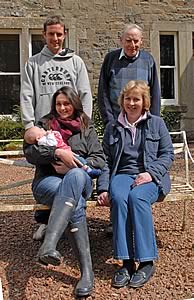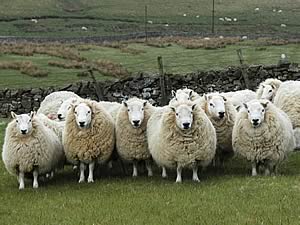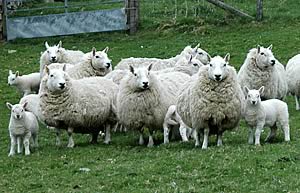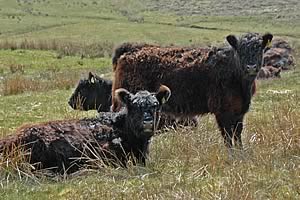 |
|||||||||
|
||||||||||||||||||||
|
|
South Country Cheviot Sheep at Home on the Hill Traditional South Country Cheviot sheep have been the backbone of the enterprise at Hindhope, Jedburgh for the Elliot family which have farmed there for two centuries.
The 2,500 acre farm runs up to 1,600ft on the Scottish foothills of Cheviot where the breed of sheep originated, bred by the monks of Bowmont and subsequently making their way into the Highlands of Scotland where the North Country Cheviot was developed. Tim and Hilary Elliot run Hindhope with their son, Tom, the fourth generation of the family. A true hill unit and part of the Roxburgh Estate, the land at the steading runs from 900ft above sea level in the Kale Valley, a tributary of the River Teviot, with only 70 acres of mowable land for hay and the rest enclosed hill. A more recent addition to the livestock enterprise at Hindhope has been the herd of Galloways, founded in the 1950s and both the sheep and cattle, out of necessity, need to be easy care. “The South Country Cheviot has evolved in the conditions on these hills. They are a hardy breed and they are outwintered and lambed on the hill,” said Tim. “Last winter was the worst winter we have had in seven years and the prolonged covering of snow meant we had to feed them hay,” he added.
Today’s 1,200 South Country Cheviots all go back to the bloodlines of the original sheep. All the ewes are bred pure with 270 ewe hoggs retained each year as replacements and the remainder of the lambs sold store at six months old at the September St Boswells sale, or privately. Around 200 draft ewes are also sold privately each year and potential breeding rams are carefully selected for use at home as shearlings and then sold as two shears at Lockerbie the following autumn. As a result, only proven rams are sold and this year there are 10 for sale. Rams have sold to a top price of £8,500 at the 2002 Lockerbie sale for Hindhope Sandy, by a Hislop ram bred by Sandy Fleming, Hislop, Hawick. Rams generally average between £450 and £500. Cheviots have been bred at Hindhope for as long as the family has farmed there and Hindhope sheep were exhibited at the first Highland Show in 1832.
Tim Elliot remembers attending his first Highland Show when it moved around the country and it was staged at Kelso. “It was a great shop window for the breed,” said Tim. Hindhope sheep have regularly collected the South Country Cheviot championship - including in the show’s 100th year in 1932. The Elliots won the championship with a three crop ewe in 2006 and a two shear ram the following year. Cheviot sheep from Hindhope have been exported all over the world, including Canada, New Zealand, Australia and Russia. The easy-care attributes of the Cheviot with pressures on staffing and their abilities as a crossing ewes and producing good, spring lamb, are increasing the breed’s popularity. At Hindhope, the sheep are low input and have minimal disease problems. To cope with the farm’s hard conditions, sheep are selected for their milkiness as well as for conformation which is passed on to commercial progeny.
The Galloways, which also carry the Hindhope prefix, fit the farm in a similar way. The herd’s 27 cows all calve outside on the hill in the spring and are only fed hay when outwintered. Bulling heifers are sold at the November Carlisle sale at 30 months old with bullocks mostly being sold through Longtown Mart at 18 months old. in 2009, heifers averaged £670 for nine sold while bullocks generally average £400 a head. Current stock bull is Barlaes Youngster and recent sires have included Hownham Grange, Kilnstown, Burnfoot of Ewes and Tweedshaw breeding. “The future for the Galloway is good. There are a lot of new buyers at the sales and there is increased interest because of their ability to graze rough grass in compliance with environmental schemes,” said Tim. “Since the age for finished beef has been increased beyond 30 months this has been in favour of the Galloway which can be naturally matured outside producing far superior beef,” he added.
|
|||||||||||||||||||

|
|
|||||||||||||||||||
| home | agri-services | pedigree
pen | news | dairy | beef | machinery property | organisations | site map |
||||||||||||||||||||

Article by
Jennifer MacKenzie



